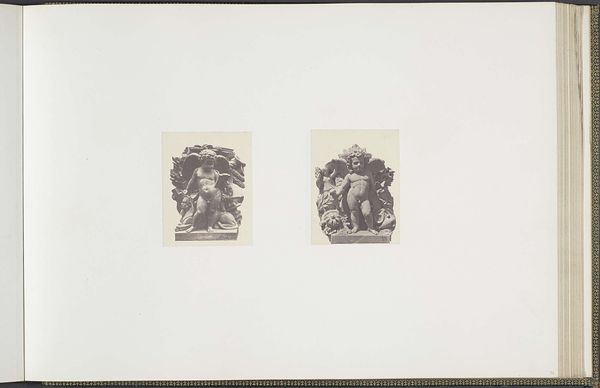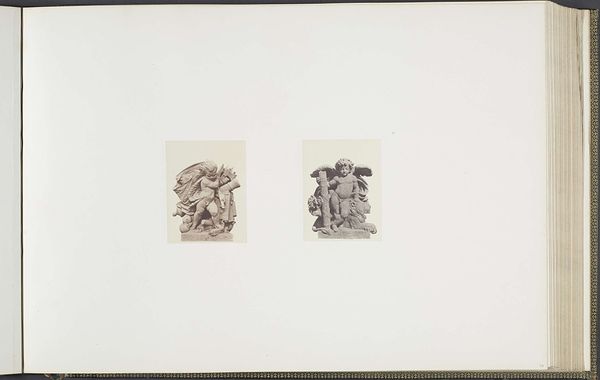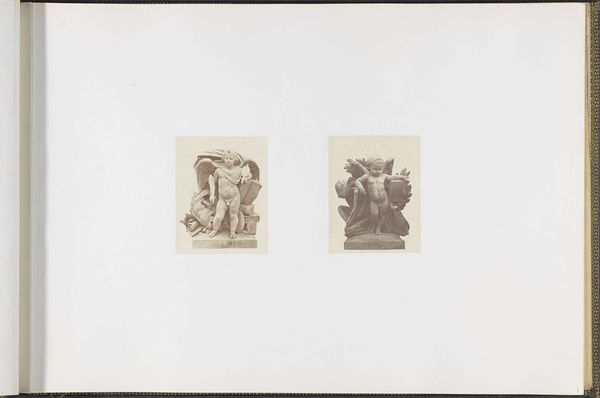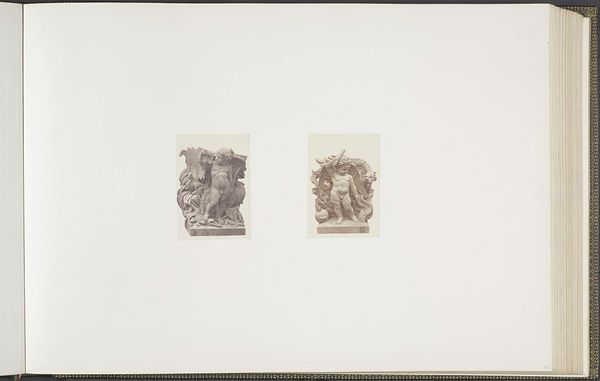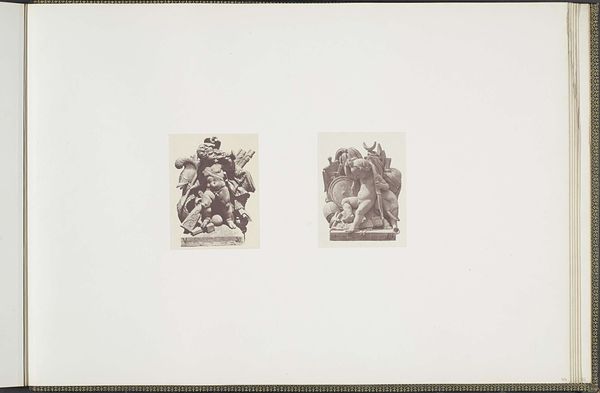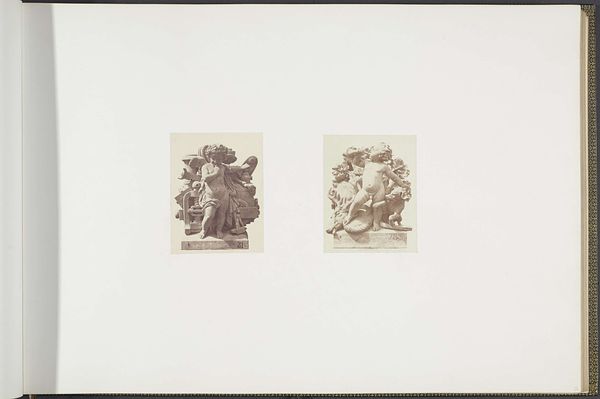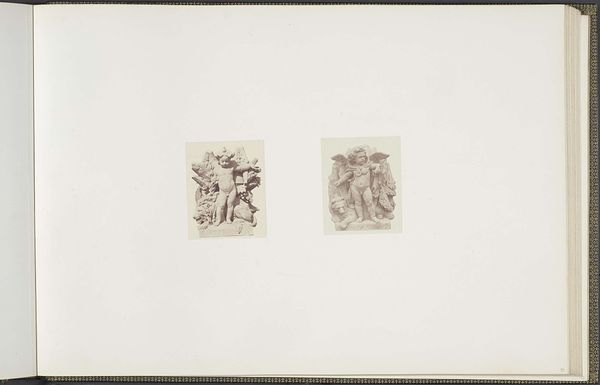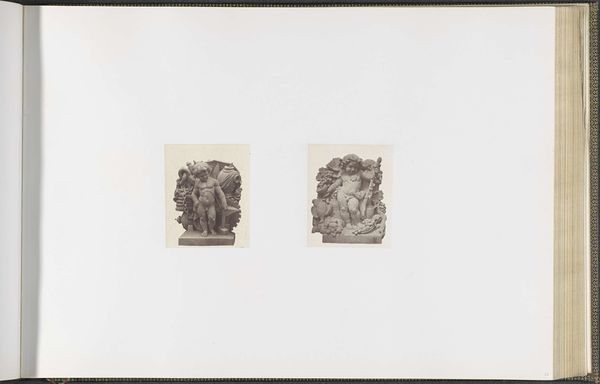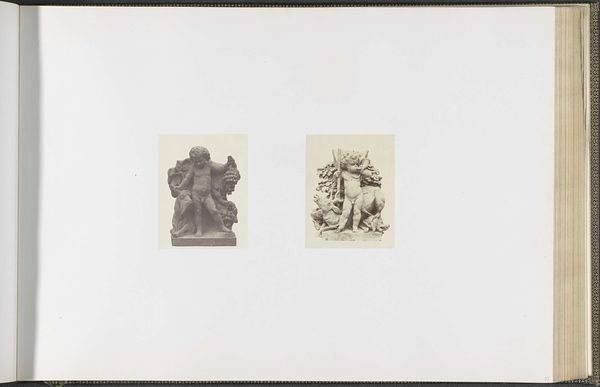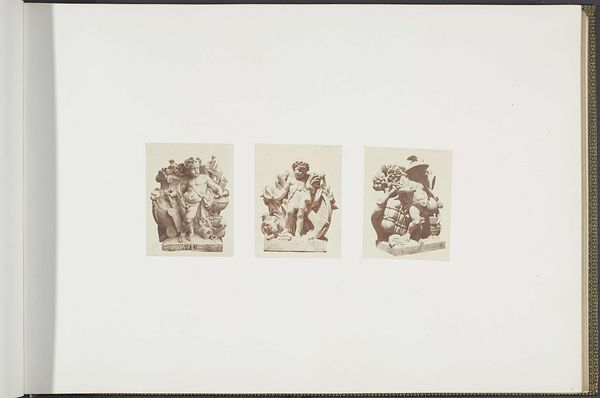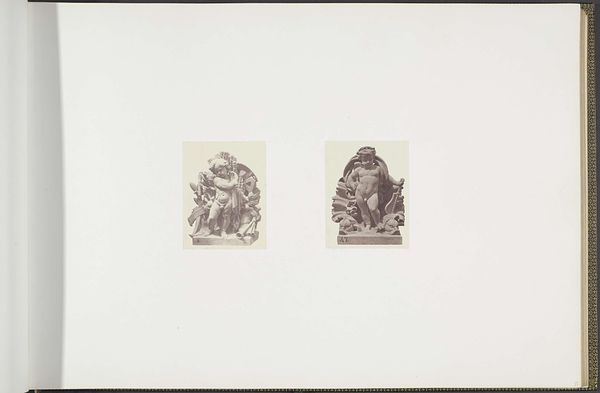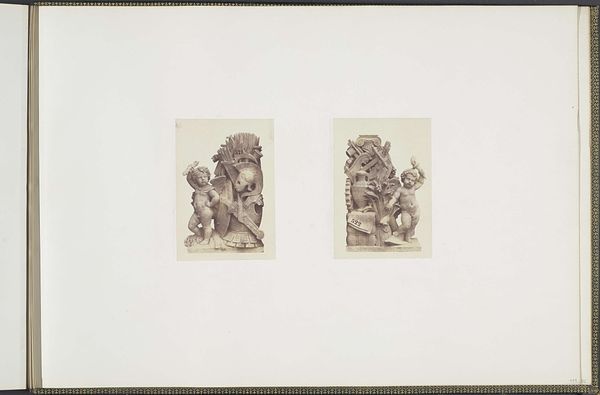
Gipsmodellen voor beeldhouwwerken op het Palais du Louvre: links "Les Découvertes maritimes" door Louis Merley en rechts "La Mer" door Ernest Christophe c. 1855 - 1857
0:00
0:00
edouardbaldus
Rijksmuseum
photography, sculpture
#
neoclacissism
#
photography
#
sculpture
#
history-painting
#
academic-art
Dimensions: height 378 mm, width 556 mm
Copyright: Rijks Museum: Open Domain
Curator: Well, aren’t these intriguing! We're looking at a photograph from between 1855 and 1857 by Edouard Baldus, titled "Gipsmodellen voor beeldhouwwerken op het Palais du Louvre." It depicts plaster models for sculptures: "Les Découvertes maritimes" and "La Mer." What’s your first impression? Editor: Claustrophobia, surprisingly! Even in monochrome and miniaturized, these cherubic figures practically burst from their shallow depths, crammed with symbolic nautical flotsam. The weight of history bearing down, perhaps? Curator: Exactly! Both cherubs serve as allegories, linking maritime discoveries and the sea itself with cherubic innocence. Baldus captures them frontally and emphasizes their mass and density. It feels intentionally imposing despite its humble size. The photograph serves to document the planned sculptures. Editor: And isn’t the cherub on the left entangled in tools of navigation—an astrolabe, books? He seems almost overburdened by knowledge. Then, on the right, the cherub merges with a turbulent, baroque wave...it feels quite symbolic about confronting nature, both gentle and overpowering at the same time. I sense some psychological ambivalence there. Curator: Good eye! That cherub's pose and the drapery swirling around him echo classical depictions of the sea god Poseidon or Neptune. And the other one…there’s that faint smile playing on his lips while he’s buried beneath maps, boxes, tools…. it speaks to how exploration can lead one astray just as easily. I wonder if that captures the imperial spirit—expansion in thought or greed? Editor: Perhaps both. I think that academic art tried to hide its ideological investments, which Baldus' photo inadvertently exposes. The rigid compositions betray a desire to make history as much as simply depicting its future. These images project authority; not observation, control—which tells us a lot about how power expresses itself in cultural memory. Curator: Interesting perspective. Thinking about what we learned about that composition helps see things anew. Editor: Me too! These tiny cherubs have got me pondering giant ideas now. I guess, sometimes the greatest journey comes from the smallest details.
Comments
No comments
Be the first to comment and join the conversation on the ultimate creative platform.
